The Eucharist Celebration & the New Social Media
I cannot express gratitude enough for the opportunity, once again; to join God’s anointed. I am indeed grateful to be here and to share in our deliberations. Even more fulfilling for me, is the role you have handed me to speak on the subject of The Eucharist Celebration and the New Social Media. May God continue to bless you and show you the lighted path that you may be able to lead His flock safely to salvation.
Rev. Chair, I intend to be a vessel for the Lord to use, and in so doing resist the temptation inherent in opportunities such as you have handed me – the temptation to show oneself worthy of the invitation to speak and so speak endlessly to justify oneself. Too many are they who better qualify to discuss the subject than I do and I count it grace to be selected. I pray that God bless my presentation so that He uses it to continue his work of evangelization.
In accepting this role, Rev. Chairman, I am doing so in all humility and in the capacity of a facilitator – critically aware that I know no more than you do in this very disruptive reality we call Social Media, and to help us bring our ideas into a crucible, a melting pot so we can refine and choose the good from the not so good.
“Priests should use the Internet to evangelize more.” That’s what Pope Benedict’s World Communications Day message urged us.
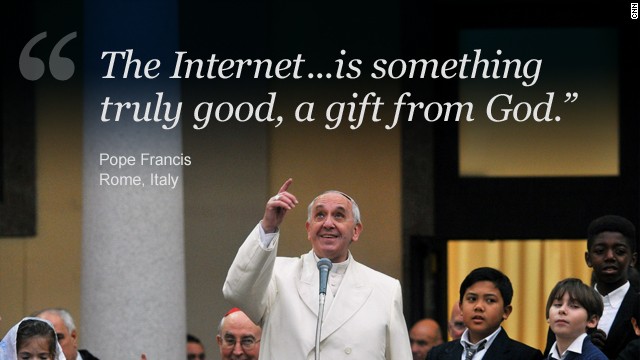 Some of us are located in remote areas of our country where both electricity and Internet availability remain formidable challenges. However the Eucharist, the center of our faith continues to be celebrated on a daily basis. Such leaders are better placed to convince us why Social Media is not readily an applicable tool in the commission to take the Gospel to the ends of the world and ensure that the Eucharist is celebrated throughout the world. They may ask, perhaps justifiably so, what Facebook, Twitter, YouTube and Instagram have got to do with them.
Some of us are located in remote areas of our country where both electricity and Internet availability remain formidable challenges. However the Eucharist, the center of our faith continues to be celebrated on a daily basis. Such leaders are better placed to convince us why Social Media is not readily an applicable tool in the commission to take the Gospel to the ends of the world and ensure that the Eucharist is celebrated throughout the world. They may ask, perhaps justifiably so, what Facebook, Twitter, YouTube and Instagram have got to do with them.
For some of us also located in very wired areas where network availability – both electricity and telecommunications – are no problems at all, our case is that we do not want to join in the street conversations that characterize social media engagements. After all the decision to join one social media group or create one, is mostly a private choice rather than a corporate one.
There are also the rest of us who have wholeheartedly embraced the phenomenon and have taken virtually every issue to Social Media. We post matters from our closets and business engagements alike with the same comfort.
In-between these groups, however we may also find moderates who like the Biblical admonition to be modest, are almost frugal, careful to post or consume only what is needed for the moment.
Let me at the outset; throw in the matter of the propriety of Social Media in the celebrating the Eucharist. Can we really use social media to propagate the Good News and get the Eucharist to be celebrated throughout the world? I pray that we come to a fruitful consensus at the end of our discussions.
Bare in mind what Pope Bendict says about social media – he defines social media as the new agora. He encourages priests to engage in cyberspace and to blog with priestly hearts.
Pope Francis in his message, entitled Communication and Mercy: A Fruitful Encounter, for the 50th World Day of Social Communications on Friday 22nd Jan 2016 said “The Internet, text messages and social networks are ‘a gift from God”.
If I were to offer my own response to the question, I have another question for an answer though, and it goes like this; is there something Social Media cannot do? We have seen it mobilize and destroy nations, it has created empires and created business moguls just as it has disrupted businesses like the print media and created and refined others. It has changed communications and the way we relate with one another. It may well be providential that we are looking at it now; the sages say it is better late than never. Is there really something that Social Media cannot do?
Rev. Chairman, the two ingredients of our topic, “The Eucharist Celebration” and “Social Media” individually are day-long discussion topics and so what I propose we do, with your kind permission, is to take a peek view at either and then synthesize them. However, I am sure that other speakers will speak on The Eucharist. So what I intend to do is to focus on how Social Media will facilitate our celebration of the Eucharist and also help us in spreading the message of the Eucharist via new evangelization.
 “The Holy Eucharist completes Christian initiation. The Eucharist is the heart and the summit of the Church’s life, for in it Christ associates His Church and all Her members with His sacrifice of praise and thanksgiving offered once for all on the cross to His Father; by this sacrifice He pours out the graces of salvation on His Body which is the Church” (Catechism of the Catholic Church, #1322, #1407). Rev. Chair this is a quotation and I have duly cited the source.
“The Holy Eucharist completes Christian initiation. The Eucharist is the heart and the summit of the Church’s life, for in it Christ associates His Church and all Her members with His sacrifice of praise and thanksgiving offered once for all on the cross to His Father; by this sacrifice He pours out the graces of salvation on His Body which is the Church” (Catechism of the Catholic Church, #1322, #1407). Rev. Chair this is a quotation and I have duly cited the source.
The celebration of the Eucharist is not a private devotion but rather a communal gathering much like a family meal. We come together at the same time and in the same place so that we can take part in a common action. So there is always going to be the need of physical interaction when it comes to celebrating the Eucharist and it cannot be done alone. It is a sacrament and you need to receive the actual body and blood.
The principal participant in the celebration of the Mass is Jesus Christ, who makes His presence felt in the assembly of His followers, in the proclamation of the Word, in the person of the priest, and especially in the Eucharist. Jesus fills the community with His Spirit as His Death and Resurrection are memorialized, and His followers obey His command to “Do this in memory of me.”
As we discuss the Eucharist Celebration and the New Social Media, we should not be tempted by those who are offering to offer the Eucharist online and virtually. We need to receive the real body and blood of Christ. You can opt for Spiritual Communion when you pray Act of Spiritual Communion.
My Jesus, I believe that You are present in the Most Holy Sacrament. I love You above all things, and I desire to receive You into my soul. Since I cannot at this moment receive You sacramentally, come at least spiritually into my heart. I embrace You as if You were already there and unite myself wholly to You. Never permit me to be separated from You. Amen
Note that is when you cannot receive Christ physically and I dare say it should be prayed sparingly.
So I will want to echo what Pope Francis said;
“It is not possible to love Christ but without the Church, to listen to Christ but not the Church, to belong to Christ but outside the Church. For the Church is herself God’s great family, which brings Christ to us”. Our faith is not an abstract doctrine or philosophy, but a vital and full relationship with a person: Jesus Christ, the only-begotten Son of God who became man, was put to death, rose from the dead to save us, and is now living in our midst. Where can we encounter Him? We encounter Him in the church, in our hierarchical, Holy Mother Church. It is the church which says today: “behold the Lamb of God”; it is the church, which proclaims Him; it is in the Church that Jesus continues to accomplish his acts of grace which are the sacraments. (Pope Francis, Homily, Jan. 1, 2015)
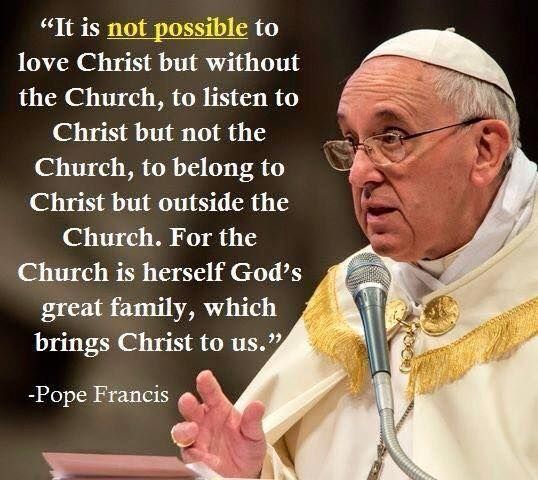 So the use of New Media and Social Media will not be to provide a virtual Eucharist and allow Christians to want to encounter him alone on social media or within the virtual realm. But it will have to reach out to the people and through the New Evangelization draw them to come and experience Christ Himself physically in His true Body and Blood – The Eucharist.
So the use of New Media and Social Media will not be to provide a virtual Eucharist and allow Christians to want to encounter him alone on social media or within the virtual realm. But it will have to reach out to the people and through the New Evangelization draw them to come and experience Christ Himself physically in His true Body and Blood – The Eucharist.
In Jeremiah 3:22 God orders “Return, you rebellious children, and I will heal your rebellions. Behold we come to thee: for thou art the Lord our God.”
Indeed we deceive ourselves, just as the Bible points out, to think that the job of winning back our former friends who now have fallen away because of one faith crisis or another will be made any easy because of our former association. In Hebrews 6:4-6, we read: “4 For it is impossible for those who were once illuminated, have tasted also the heavenly gift, and were made partakers of the Holy Ghost, 5 Have moreover tasted the good word of God, and the powers of the world to come, 6 And are fallen away: to be renewed again to penance, crucifying again to themselves the Son of God, and making Him a mockery “.
This is our reality, and we need every available brick we can lay hands on, including Social Media, to accomplish our mission.
Lets bear in mind that there is great rejoicing in heaven when just one sinner returns to God – Luke 15:10 says so. “So I say to you, there shall be joy before the angels of God upon one sinner doing penance”.
Some have fallen away as a result of the pleasures of the world. Others have been confused with other faiths, and others still have been let down by some of us in the church. It is easier then, according to the Bible, to win people who have not tasted of the faith before, than to tango with those who have been embittered.
Data on Mass attendance is not readily available in our local churches, (at least in some of the places that I tried, the impression I got was that it would need some time to compute and this is one of the areas that I believe that the Church in Ghana must work on. What you do not measure you cannot not manage). A study I came across of Catholics in the United States found that only 23% of them regularly attended Mass once a week, while 77% self-identify as proud to be Catholic. If congregants confess Christ, proclaim their faith in the Catholic Church and yet live lives that are not Christ-like, when they will not heed to Christ calls to all of us to do this in remembrance of Him and do not join us in celebrating the Eucharist – it only helps measure the enormity of the task ahead. Such lifestyles point to the fact that the church is not only losing members but also its influence and authority. However there is hope for the future and it will require you and I to answer the call like Samuel – Father send me I will go!
Let us remind ourselves that the backslider is not the type that is occasionally absent from Mass, and they are not even the habitually casual attendants. They include the ones who go to all lengths to avoid fellowship and physical contact. They are the more likely to make extra effort not to be met either at home or their favourite joints, and would be first out the window to see our approaching feet and instruct his children or neighbours to proclaim his absence. And Rev. Chair my choice of the male gender in this example is deliberate, for if men had half the zeal of women in seeking Christ; I bet our world would be a far better place. Also some backsliders are those in the church who will not receive the Eucharist especially because they have not blessed their marriages that is a major issue in our Ghanaian Church.
Rev. Chairman as we celebrate the 2017 National Eucharistic Congress we need to bear this in mind – how can we bring all of these to the saving grace of God, using Social and New Media among others.
Okay, let’s start from the beginning. What is social media?
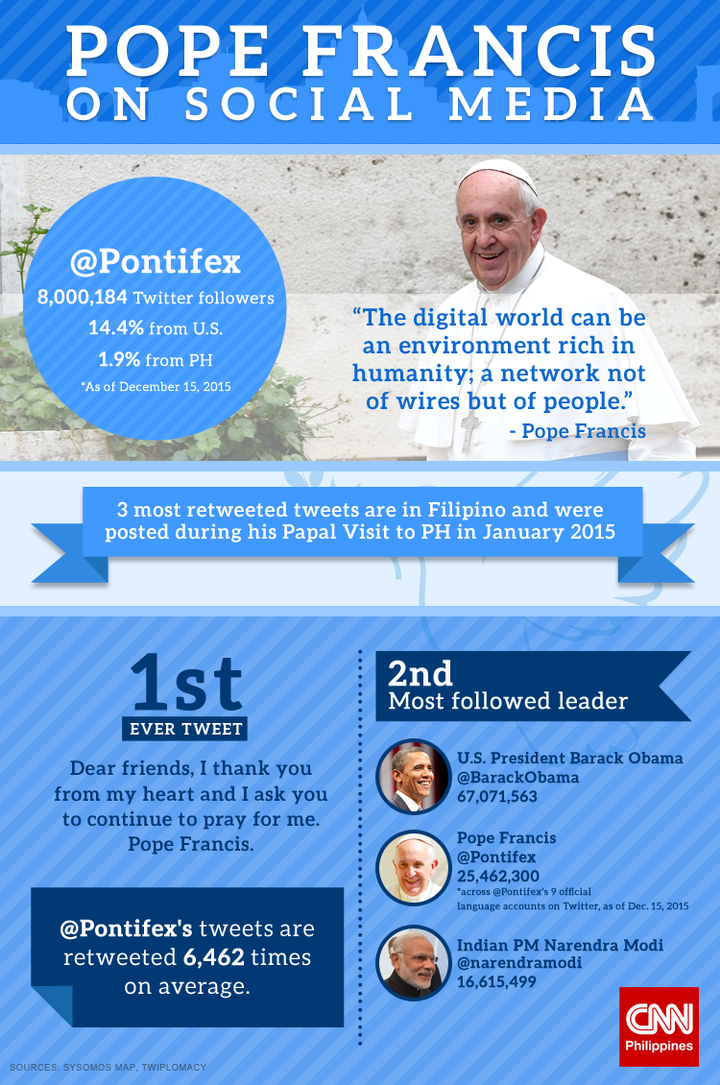 Some common terms you will come across in trying to define Social Media are the two terms ‘create’ and ‘share’. (and I can hear some of you adding ‘loot’.) No, there is no looting here, only create and share. You may also come across ‘compelling content’, applications, participation, social networking, computer-mediated technologies, virtual community and user-generated content.’
Some common terms you will come across in trying to define Social Media are the two terms ‘create’ and ‘share’. (and I can hear some of you adding ‘loot’.) No, there is no looting here, only create and share. You may also come across ‘compelling content’, applications, participation, social networking, computer-mediated technologies, virtual community and user-generated content.’
Many people confuse this concept with specific platforms. Don’t think that mastering Twitter or Facebook will give you the “social media expert” status. This is wrong. Social media is a fundamental shift in communication.
It all began with the concept of “Web 2.0” presented at a conference organized by the O’Reilly Foundation. The second version of the World Wide Web brought to an end the one-way communication era.
Web 2.0 not only is a two-way engagement, but it can include three or four or five or thousands or millions or even billion of people. You can easily have one video on YouTube and soon have over one million people commenting on that video. The revolution is that the video doesn’t have to come from a fancy Hollywood studio: In fact it could be a video taken from the Immaculate Conception parish of Tsiame, my second parish. Any member of the community can actually upload a video and hold the torch of fame.
[Let me pause to do one of my evangelization jobs I am here to do outside the topic – All of us in the towns and cities away from our home towns, send part of your monthly thanksgiving to your home town parish and help develop it. Note we are the new Rome for our home town parish as was when St. Theresa was started with support from foreign lands]
Rev. Chairman in Social Media we are referring to that phenomenon of communication that has made nonsense of centuries old communication theories such as the “Magic Bullet”, “Hypodermic Needle Model”, and the “Inverted Pyramid” theories. The church’s communications have been fashioned along these old theories and no longer appear to be effective.
Inherent in the Magic Bullet is the deception that the speaker has only to speak and his listener, once hit by the message, will bite the ‘bullet’. In the Hypodermic Needle Model, the listener or receiver of the message was expected to act according to the expectations of the sender, or in our case, the preacher. Similarly in the Inverted Pyramid theory of the media, so-called “important” issues and personalities made the news, and the down trodden made news only when some calamity befell them. News was also largely packaged in similar fashion (and in some good measure traditional media maintains this).
Social media however teaches us otherwise – that the ordinary man, your next door neighbor, your parishioner, the market woman or farmer or hunter, also has views that need to be heard and respected. This is the reason why Facebook, Twitter, YouTube and the likes continue to grow. It also teachers us that receivers of our messages must first process them and decide what to do by themselves. And that when they have formed opinions or positions about issues, they need to be heard, at least by those of us who seek to correct them from wrong.
Here is where consumers are creators as well. Among these are the people who are refusing to join us celebrate Eucharist regularly. Some of them are deliberately hiding from us, but they are active in this space. They are creating content of their own and consuming others’.
Can we then reach them by playing in their space? My answer is ‘sure we can.’ We have to, and there are no two ways about that. But here is my caveat. Every marketer knows that there is no better marketing tool than one-on-one interactions. If there can be results, they are mostly instantaneous. We will use social media then, but in a complimentary role. We cannot shut down our traditional ways of evangelizing – the house to house, Celebrating Mass, other devotions and other such engagements. We may have thousands of feigning social media friends and therefore cannot measure our virtual congregants truthfully and as I have said, no one can celebrate the Eucharist virtually.
Your Graces and Lordships can you adore the Lord in the Most Sacrament in benediction virtually? That is a question I will love an answer to. Yesterday while still researching my presentation. I used social media to ask this question of 39 Priest, and 1 Rev. Brother and on SMS, I was able to reach 3 Bishops. That is the power of Social Media that we need to use to bring a lot more people to celebrate the Holy Eucharist. Though the answers is mixed it is gen
The adoration of the Eucharist outside mass was triggered by St. Pope John Paul and caught very much in the US, in Ghana we are just starting it. We need to do more to promote the perpetual adoration of the Eucharist outside Mass. It has immense benefits.
Father Victor Warkulwiz from the Apostolate for Perpetual Eucharistic Adoration in Bensalem, Pennsylvania, said “It brings an increase in spiritual life in a parish, a spiritual vitality. I’ve been in this for 25 years, and I see the results.”
He travels the United States and the world promoting Eucharistic adoration. “That is the way you are going to change things in the world, by going for an hour a week and visiting Our Lord,” he said. “It is something that is bearing fruit. … And much is anecdotal, but it is what we need in this day and age.”
He points to the testimonial books present in many adoration chapels that tally the workings of the Lord through adoration. He reads many on his visits, and he described a few of the experiences he has read:
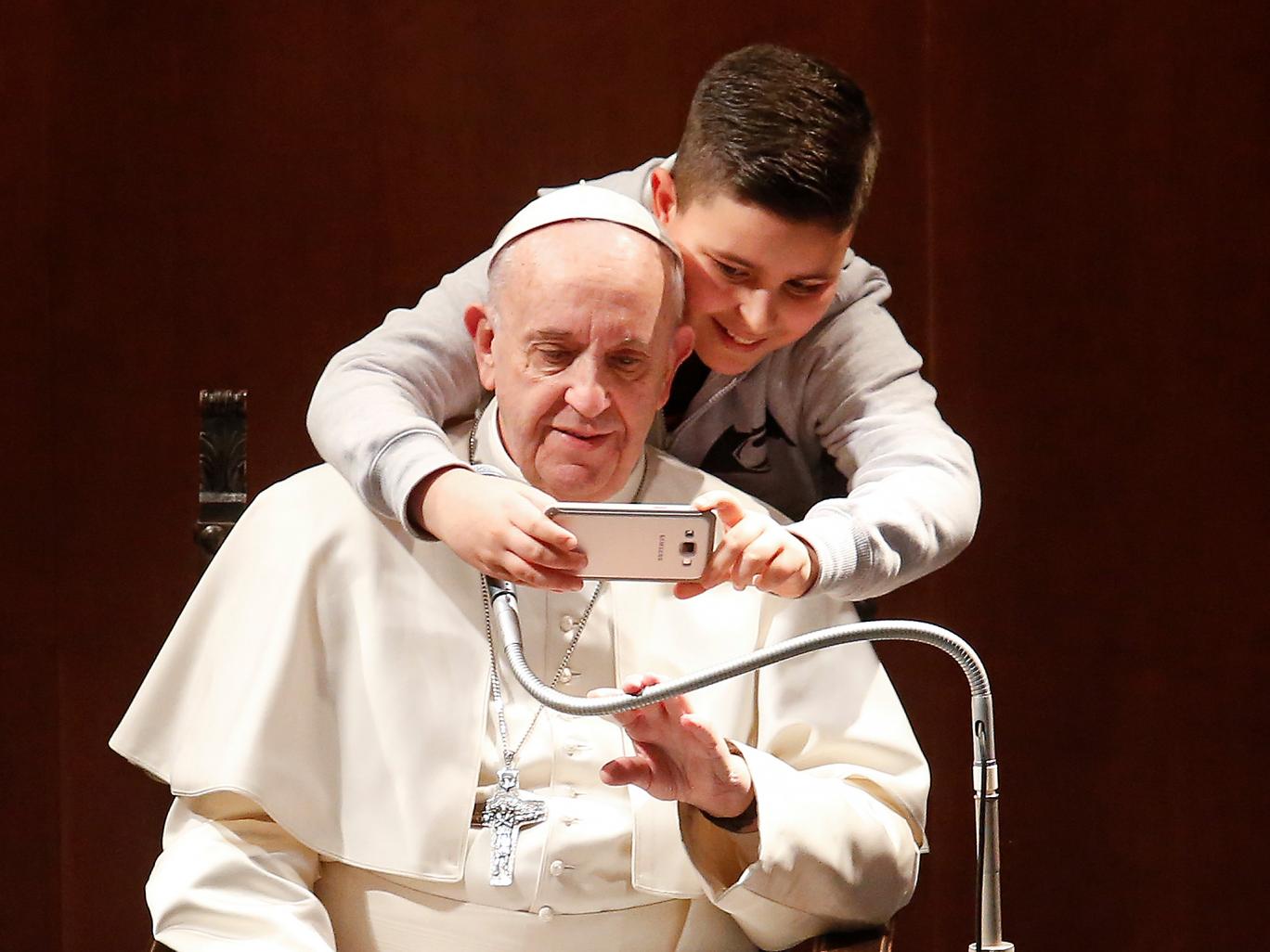 One woman had a sore knee, and doctors could find neither cause nor cure. “She started adoration and as soon as she sat down before the Blessed Sacrament, she felt warmth in her knee and the pain was gone and didn’t return,” he said
One woman had a sore knee, and doctors could find neither cause nor cure. “She started adoration and as soon as she sat down before the Blessed Sacrament, she felt warmth in her knee and the pain was gone and didn’t return,” he said
Another woman, who wasn’t Catholic and had no understanding of real presence, was touring the grounds of a Catholic church when she saw people coming and going through an unmarked door: “She was curious, and went in and she felt an overwhelming presence of the Lord. She had no knowledge of this, but she became a Catholic and is now a coordinator of a perpetual adoration chapel.”
Lastly he recalled a woman who could not put her worries to rest: “She signed up for an hour of adoration, week after week, and the worrying just stopped.”
Approaching the presence of Jesus can be daunting, but the late Fr. Joseph A. Pelletier, who wrote the “The Sun Danced at Fatima,” offered some advice:
Social media is another means to “connect” to Eucharistic adoration, Father Warkulwiz learned. “I see a lot of younger people sometimes responding better than older people, and most of them have hashtags (a number sign that conveys the subject a Twitter user is writing about so that it can be indexed and accessed in other users’ feeds) with their sign-ups. The Lord is drawing them there and makes it an attachment so they can come and talk to him.” [www.osv.com]
There are more mobile phones in Ghana, than people and this is a huge change from the past. How are we using this to evangelize a lot more people? Definitely social media and the technological changes that have come with it offer us a lot more opportunity for getting people to celebrate the Eucharist, though it has potential to draw them away as well.
Do we have testimonial books in our Adoration chapels and yes we can use social media to share these testimonies and draw more people to the Eucharist.
Can we build Adoration Chapels online with the right content and liturgy where there is no distraction? Yes I believe we can
There are at least four kinds of prayer most appropriate in the presence of the Eucharist, namely
- Adoration and Praise,
- Thanksgiving,
- Repentance
- Trusting intercession.
So if one follows, Eucharistic adoration over Social Media, we must take into consideration these forms of prayers and thus choose the media, time and place, which will permit these forms of prayers.
The purpose of the exposed Sacrament on the altar for adoration is a complete focus on Jesus and him a lone. If one should follow the Eucharist adoration on a social media, this is absolutely important caution. All notifications must be turned off, like not using your “Phone” in Church. Similarly it will not be appropriate to switch on to a live adoration from a website whiles one is busy with work and come back to view every now and then.
This is so true that “During the exposition of the blessed sacrament, (even) celebration of Mass in the body of the Church is prohibited” (Eucharistiae Sacramentum 83).
In Eucharistic Adoration, the fundamental focus is Jesus himself. The norms generally indicate
Exposition of the holy Eucharist, either in a ciborium or in a monstrance, leads us to acknowledge Christ’s marvelous presence in the sacrament and invites us to the spiritual union with him that culminates in sacramental communion. Therefore it is a strong encouragement toward the worship owed to Christ in spirit and in truth.
In such exposition care must be taken that everything clearly brings out the meaning. However this virtual adoration should not replace the physical one. But it will be better than the current situation where a lot of our youth do not spend time with the Lord.
I will start the Media of the Monstrance on Social Media and it will be great to get millions appropriately before the Lord in Spirit and in Truth Adoring Christ in the Eucharist online
How do we go about it if we agree that we can use Social Media in The New Evangelisation, bring more people to celebrate the Eucharist and well as adore Christ in the Eucharist.
There are various positions that the church has provided on Social Media, including some books and I will share a few at the end of the presentation.
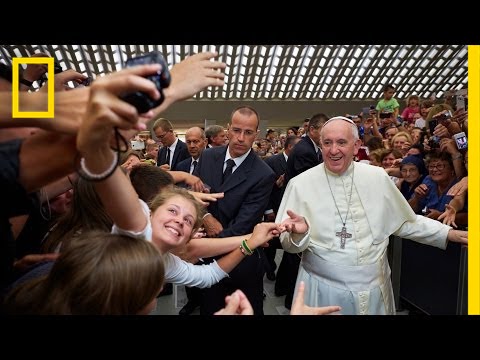 However the Inter Mirifica the Papal document on the media of social communications provides some good insights. Let me share a few:
However the Inter Mirifica the Papal document on the media of social communications provides some good insights. Let me share a few:
- Technological advances have created new avenues of communication, this include Social Media. These can be of great service to mankind, but “the Church recognizes…that men can employ these media contrary to the plan of the Creator and to their own loss.” (IM, 2)
- Use of the new social media must be guided by the laity “to instill a human and Christian spirit into these media, so that they may fully measure up to the great expectations of mankind and to God’s design.” (IM, 3)
- Media should communicate that which is “proper and decent” (IM, 4) and that which is within the “bounds of justice and charity.” (IM,4) “The Council proclaims that all must hold to the absolute primacy of the objective moral order, that is, this order by itself surpasses and fittingly coordinates all other spheres of human affairs-the arts not excepted-even though they be endowed with notable dignity.” (IM, 5)
- Not only should the creators of news, media, and communication be concerned about the content, but so also should those of us, viewers and readers of said content. “All who, of their own free choice, make use of these media of communications as readers, viewers, or listeners, have special obligations” (IM, 9) to avoid that which would cause themselves or others spiritual harm or promote evil and hinder good. Those who use social media should be moderate and self-controlled in their use.
- To assist in these ends, a truly Catholic media should be created and encouraged. (IM, 14) – So what are we doing as the Catholic Church in Ghana to create our own media including social media networks to envalenglise and bring more to celebrating the Eucharist?
Note that Inter Mirifica that I have adapted here serves as a foundation from which to address modern means of communication, it was written in 1963 and much has changed since then. Papal documents on social communications serve to support and unpack the Church’s teaching on this subject.
In the document “The Church and Internet” by the Pontifical Council for Social Communications, it is stated, “although the virtual reality of cyberspace cannot substitute for real interpersonal community, the incarnational reality of the sacraments and the liturgy, or the immediate and direct proclamation of the gospel, it can complement them, attract people to a fuller experience of the life of faith, and enrich the religious lives of users.”[1]. So yes we can use social media to draw people especially the backsliders and those who have not heard the message to the celebration of the Eucharist. As Fr. Ceaser Aturie thought me at 1:33am on Whats app, “Yes, all these means are useful. However they are only preambula to the real participation”.
Let me discuss a few points:
- Database of all congregants: For a start we need to procure a database of all our members in the different parishes. We need to assemble information such as emails and telephone contacts. From here we have to group the members into identifiable categories such as the very strong in faith and those who are weak and need help as well as backsliders. This will ensure that messages are properly tailored. We need to track numbers who come to church and use big data to track how our people live their lives.
- We are in the time of mass customization we need to adapt the message and information to the preference of the people.
- We are in the time of big data and analytics where we can predict the challenges of parishioners and be able to provide them messages at the point of their need. Do you know that in this day of social media if we can track when our kids are becoming suicidal. Will it not be helpful to tailor messages that can help them at that point of need. This is knowledge that God has created, lets leave it to only big business to use. The Church can use it in the business of salvation. Why are we failing?
- We should be able to track those who are coming to church but not receiving communion and be able to get to them and bring them back to the saving grace of God.
- Social media consumption costs data: While we may not necessarily incur costs in setting up Social Media accounts which are mostly free – active participation will cost us in data for upload and consumption of content. Our messages or content need therefore to be short, concise and interesting. Our targets need to buy credit to download our messages and react to them, and if we acknowledge that the times are hard, then this is not the time to burden them with extra costs. We need to offer value for money.
- Multi skills required: We may need to learn a number of skills to produce some of the content we need our congregants to consume. It is the truth today that videos are the most consumed content globally. The same applies in Ghana. We therefore need photography skills, video and audio editing skills and a host of others. Alternatively we can engage professionals on contract, that is if we cannot find such skills in the congregation.
- There are a lot of professionals in the church, how are we using them. Let us not be asking for only pro bono work. Lets pay them well to work for God and teach them how to give back to God and we will be better for it.
- The Vatican is doing a lot of that, the Holy Father is tweeting, he is on Facebook and has just added Instagram to the tools for evangelization. The Holy Father is older than a lot of you my Graces and Lordships but he is beating you to it.. Not good enough.
- The Vatican thinks Instagram is an ideal place to evangelize for those who prefer a more visual medium, and the Pope agrees. The account @Franciscus (Latin for ‘Francis’) madeits first post Saturday 18th March 2017, a picture of the pope accompanied by the text “Pray for me.”
- Our 79-year-old Pope’s Twitter page, has been live since 2012, his Instagram feed is be managed by the Vatican’s social media department. The account’s posts can be read in nine different languages. So our Bishops need not do it by themselves. But there is no excuse not to have a social media department or unit.
- Active administration: Managing Social Media platforms can be very intrusive. Even for individual platforms your colleagues sending you messages require immediate responses. We can therefore imagine the demand on our time when on a larger platform as that of a church. You will kill the platform if you attend to it as though it is a Sunday only forum, as some of us have come to consider Mass attendance. It should be treated as a daily practice. It is also imperative that messages are responded to in time, as some of our members on the platform will not only be sending questions or issues needing clarification, they will be posting what they think is their correct view of issues.
- Appropriate Language Use: What trends mostly on Social Media are people’s failings. The world all over would hear of us should we use some bad language. We should be reminded at all times by what Colossians 4:6 enjoins us: To let our conversation be always full of grace, seasoned with salt so that we may know how to answer everyone.
- There is a lot of pornography on social media –While there are “terrible things” on the Internet, such as pornography, violence, hatred, and bullying, Most people see the social media as a positive part of their life. It’s enabled them to find information that they might not have otherwise found, to be able to communicate with family and friends, to stay connected, to participate in government, social organizations, so it’s been a positive aspect overwhelmingly for most people. So we need to use it so that they do not abuse it. Lets fill social media with the right content.
- Identity theft: We must also guard against members who may set up pages in the name of the church and propagate wrong messages or parochial desires. In this I share with you our own experience at Graphic during the 2016 elections.
At midnight after the polls had closed and we were all expecting the Electoral Commission to declare the results, the two major political parties were at it again, proclaiming themselves winners of the polls. In fact the New patriotic Party were the first to claim victory, before later we heard about the “comfortable lead” proclamation by the National Democratic Congress. In between time we found a Facebook account of the flagbearer of the People’s National Convention, Dr. Edward Mahama conceding and congratulating then candidate Nana Addo for victory. We were the first to publish this on our website, Graphic Online, and within minutes of the publication, we had calls from PNC chairman Bernard Mornah and others from government then, denying that Dr. Mahama had done any such thing. Bernard later explained that it was one of Dr. Mahama’s assigns who had created the page in Dr. Mahama’s name, and using the presidential candidate’s photograph for his personal engagements. Responsible use of Social Media requires of us to help fight thefts of this nature. Of course the church cannot afford to be embroiled in needless controversy, and we have to be on the lookout for those who seek to drown our voices.
- Don’t be led astray by the false image of reality: The Holy father cautions the youth about their use of social media, urging them to create their own history and reject “false” depictions of reality. “Many people say that young people are distracted and superficial,” he said. “They are wrong! Still, we should acknowledge our need to reflect on our lives and direct them towards the future. We need to keep the youth grounded in real reality so we do not allow them to be led astray. We cannot do that by staying away from social media. We need to use that as we complement that with traditional media and what Pope Francis encourages the youth to do. “Don’t let yourselves be led astray by this false image of reality! Be the protagonists of your history; decide your own future.”
- Be wary of unfair attacks:- Pope Francis also warned of “unfair attacks” that can take place online: “Social networks can facilitate relationships and promote the good of society, but they can also lead to further polarisation and division between individuals and groups. The digital world is a public square, a meeting-place where we can either encourage or demean one another, engage in a meaningful discussion or unfair attacks,” the pope said.
- We should be Digital Missionaries There are some voices on the internet that are distinctly un-Christian and are using social media to rather perpetuate persecution against Christians and spread carnage in the world. The ISIS and Boko Haram are examples. “Pope Benedict spoke several times about the need for missionaries on the digital continent. Again, I think if we think of ourselves as missionaries in this digital culture we can bring some wisdom, and some witness that is greatly needed. This is what we have to do using social media to push New evangelization.
- We need to be Responsible: – Social Media can, the Pope said, “help us to be better citizens”, but “access to digital networks entails a responsibility for our neighbour whom we do not see but who is nonetheless real and has a dignity which must be respected.” He also “The internet can be used wisely to build a society which is healthy and open to sharing,” We need to use that to enhance the new evangelization and drawn more people to the Eucharist, be it within or outside of Mass.
What is the statistics of market share of social media – http://gs.statcounter.com/social-media-stats
In Ghana – December 2016
- Facebook – 6%
- Twitter – 24%
- Pintrest – 55%
- YouTube – 7%
- LinkedIn – 23%
- Instagram – 2%
Global
- Facebook – 44%
- Pintrest – 22%
- Twitter – 37%
- YouTube – 2%
- Instagram – 88%
- Tumblr – 81%
This should inform us of how we use the tools to bring people to the Eucharist.
Let me share some ways of using the social media tools for new evangelization. Yes we have the opportunity to share the gospel like never before and in a way like never before. Through our online interaction we can reach people that wouldn’t normally walk into a church: how great is that?!
Our social media platforms are not merely ways to share information but are evangelistic tools that expand our ability to reach people for Jesus.
We can’t stand on the sidelines; we can’t be spectators we should be citizens of God. How we talk online and what we talk about matters. When we talk about what God is doing, people take notice; they get excited, and they start to view the church as God’s tool to build His kingdom, a place that is close to His heart, and something they want to be a part of.
- Facebook: Share, Comment, Like:- Facebook selects how many people will see a post based on several factors, but one of the primary factors is how much people engage with the post. Sharing is the most significant, then commenting, then likes. Frequently sharing a sermon when one shows up in your feed is an easy way to spread the message. Or, copying the link to a sermon or event and pasting it in your next Facebook post. One of new tools on social media is live streaming of mass. Facebook Live
- Teresa Cross Cudjoe
- Anthony Agnes – On Facebook & On Radio too
- Instagram: Post & Repost:- Instagram is ever expanding in popularity and is an incredible space to invite people to an event or church. By simply posting about the church or reposting something that a church has already published, you can help get people plugged into what’s happening. Use that also for sharing videos too
- Twitter: Retweet, Tag, Mention:– Twitter is a very popular social media platform that allows you to spread a quote or a link throughout the web at lightning speed. Just 140 characters but very effective. Simply following your church and retweeting their posts can be a huge help in getting the message out there. Great content to consider retweeting are things about Mass times, events, inspirational quotes, and even links to sermon content and blog posts. When you are tweeting about the church, consider using public hashtags (#ChristSaves #EucharisticCongress #MassEveryDay, #StopGalamsey etc.) in your tweets and @mentioning the church to have even more eyes on your post. Twitter also is able to allow Live Streaming using
- YouTube, Share videos and audios, comment, like:- Videos is the way to go, but videos of Mass, Teachings, Devotions, and activities of societies especially the youth and post them on YouTube. Create a channel of YouTube and get the world to watch God’s activities. It is all about interesting videos. Use the professionals. It is about vlogging – video blogs. We can use that for New Evangelization. Most of the Catholic Channels are found are foreign channels. I did not see any local Ghanaian catholic channels. We should create one and populate it with Ghanaian Catholic content and market it. The Catholic Digest post https://youtu.be/5sRWlAusbvQ was posted 4 years again.
- EWTN
- Catholic Online
- Ask The Catholic Priest – Fr. Anthony Agnes – 440 Videos & Current – https://www.youtube.com/channel/UCGPla1SmGw3GGj66Y_HRC1g
- Write a Review: Yelp, Google, and Facebook:- Reviews have become a large part of how where people decide to go whether it is to buy clothes, get coffee, or even where to go to church. Your voice matters and can help build the church simply by taking a few minutes to write a positive review about our parish. A lot of people tend to look on Google and Facebook for reviews as well. Copying and pasting your review to all of these sites can be a fast and easy way for you to help build the church by providing a review.
6. Talk about it: Social Media or Personal Blog:- In today’s culture, personal stories are what grab people’s attention. Use whatever social media you are on to tell people about what God is doing in your life and in the life of the church! Using your platform to talk about the church, share messages, and invite people to church on an ongoing basis can result in an eternal impact on the lives of those you are connected to online.
7. What will you use
a. Whats app?
b. Telegram
c. Website
d. Email marketing
There is a lot of Catholic Content out there. His Holy Father & Pope Benedict have shown us the example and there is so much to learn. The Church in Ghana is lagging behind, The laity should take the bull by horn. However we require leadership from our Bishops and this will have to be by example. You do not need to do it your selves. You need teams that you work with but the handles have to be in your names. They should provide leadership, teaching, interactivity, immediacy and currency. You do not have to wait till once a year for your pastoral visit. You can interact with your folk on a daily basis. This is the least that is required of you. His Holy Father has demonstrated it, you can do it.
Please empower the Clergy to also follow your examples, start from the formations centers and the seminaries. I am not sure that the seminaries still have active websites or social media networks. How will they learn to be like the Holy Father and be able to get the message to the end of the world.
- Peter’s Regional Seminary, Pedu https://www.facebook.com/Stpeterregionalseminary/ only has 668 people liking it, why the last post was on the 18th of May 2017. The focus was the 60th anniversary, good but not good enough.
· St. Paul’s Catholic Seminary, Sowutuom
https://www.facebook.com/sowutuom/ has 955 people liking the page, quite current but 29th July 2017, not good enough.
All of us need to get on board and use Social Media to drive New Evangelization being mindful that as all tools, it can be used for evil but also as everything was created by God, it can be also used to do His work.
In conclusion as we are at the Eucharistic Congress. I want you to know that God is still in the miracle business and He is doing it right in His church that Christ founded. This is based on empirical evidence. I got to know via social media. How many of our youth who leaving the church know this? Are we sharing this to them and we are sharing the source of the Miracles using their social media. Unfortunately I got to know from the teaching of a non-Catholic Pastor. Watch this with me.
It’s important to note that we Catholics believe in transubstantiation, which says that the bread and wine truly become Jesus in substance, not simply spiritually. In saying he believes the bread and wine becomes Jesus’ body and blood “in the Spirit,” Benny Hinn appears to be affirming something different than the Catholic doctrine.
He might not be teaching the correct Catholic doctrine, but how do we reach out to the world with the message of the Celebrating Eucharist using New and Social Media
I have a testimony to share of healing at Mass.
There are several websites I used for this work and there are several books. Examples of the books are
- The Parish Guide to Social Media: How Social Networking can Recharge Your Ministry. A practical guide to social media. It is replete with facts, summaries of social media platforms, & suggested best practices
- The Church and New Media: Blogging Converts, Online Activists, and Bishops Who Tweet. It focuses on how particular individuals like Bishop Robert Barron, Jennifer Fulwhiler, and Fr. Dwight Longenecker use new media to spread the faith. It gives an in-depth view of how Catholics are successfully using the new forms of media. It also ties in the many messages from our recent Popes, especially from their addresses on Communications Day.
- The Social Media Gospel: Sharing the Good News in New Ways 2nd Edition:- If you are responsible for managing digital communications in your parish, staying current with trends in the rapidly changing world of social media can seem like an overwhelming task. Which social medium platforms make sense for your church community? How can you make them an effective tool for ministry? This is a book for you. An easy-to-understand, step-by-step guide to digital ministry for those wishing to embrace new technologies to build community and deepen faith. In this expanded edition, Gould delivers new content with humor, helpful tips, and counsel anchored in practical experience. She focuses on key topics for effective church communication, including:
- Building and ministering to online communities
- Privacy and self-disclosure in the digital age
- Integrating communications across digital platforms
- Managing and monitoring social media
- Faith storytelling with visual social media
- Hashtag development and live-tweeting
There are several resources available, let’s just use them to draw more people to celebrate the Eucharist.
God Bless all
This post has already been read 2020 times!




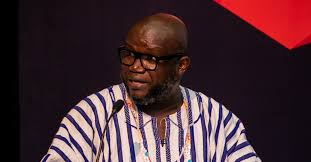
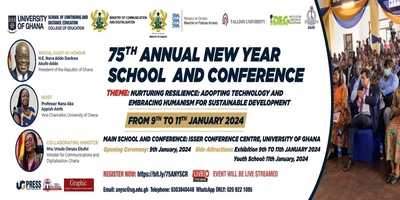
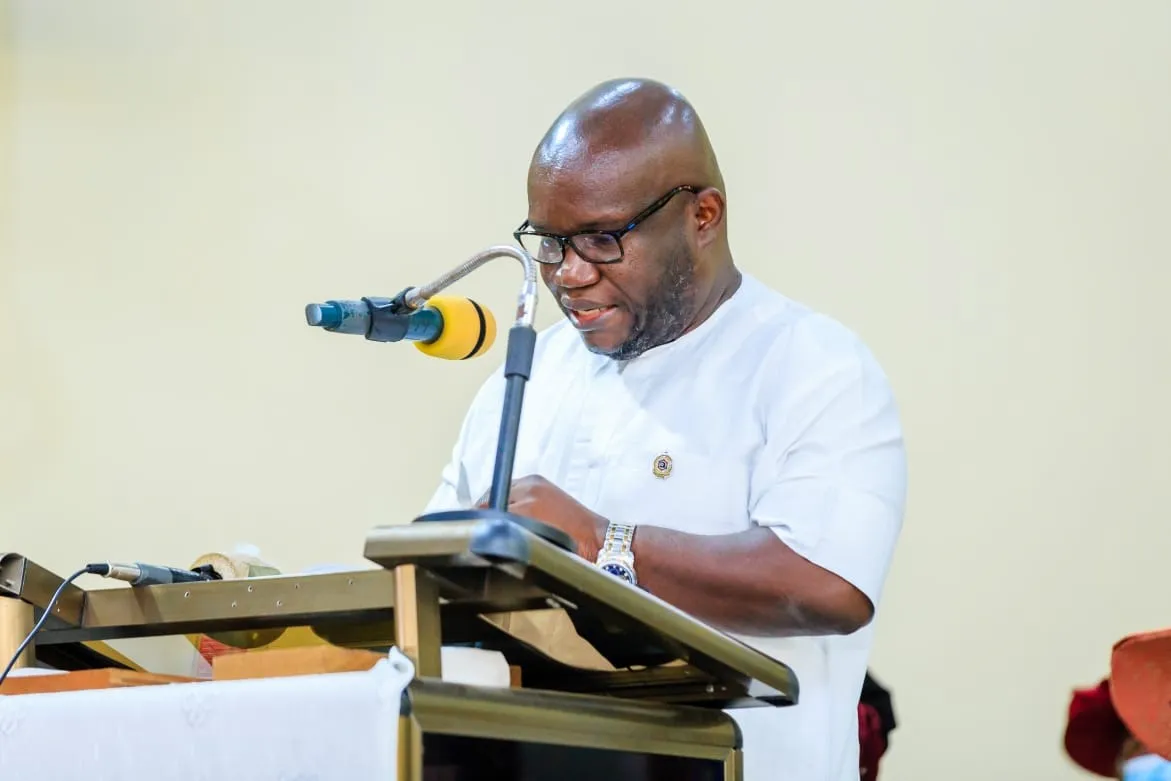




1 comment